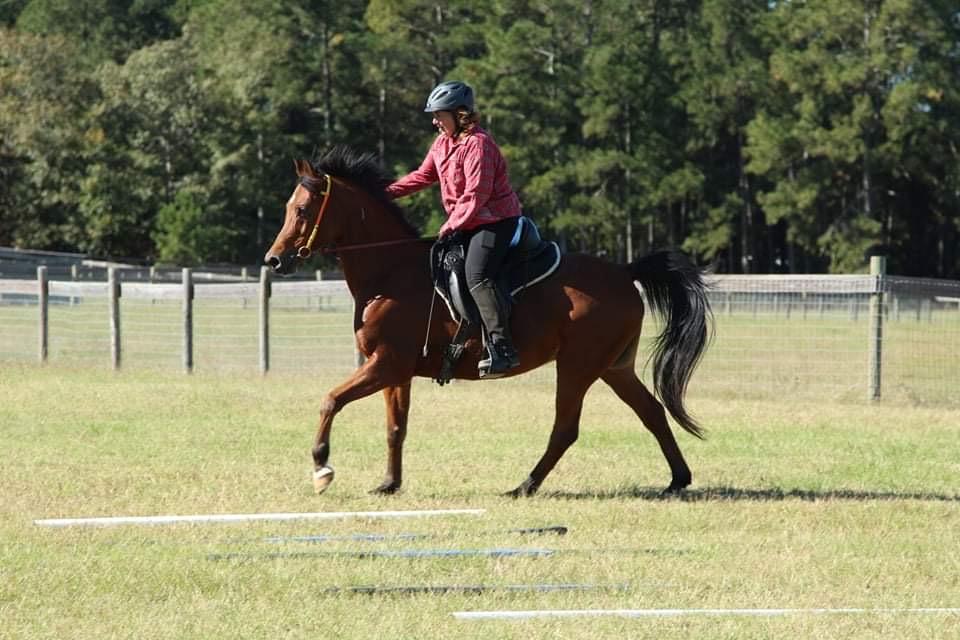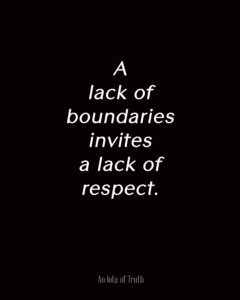(Photo by Derith Vogt.)
I asked a group of my long-time horse friends online recently about an old adage we seemed to agree exists, but collectively we couldn’t definitively credit the horseman who wrote it or said it.
(Gold star to anyone who can provide evidence of who did …)
The concept is this:
We are responsible for ruining each horse that we train just a little less than the previous one.
When my longtime friend, Ande, a successful endurance rider and horse trainer, called me this summer to see if I might want her gelding, Dunkin, I told her to tell me about him.
“Is he safe?”
“Oh God, yes.”
(In my brain, I had already decided yes.)
I believe deeply that horses find us, sometime re-find us, sometimes stop by in our lives on their way to the person with whom they are ultimately meant to be. Sometimes they come to us simply for a soft landing on their journey to their life ending.
It’s borne itself out too many times to be anything but true.
So about a month ago, I went to New York to pick up Dunkin, having never actually swung a leg over him.
Not only did I trust Ande’s assessment of her horse, but her belief and also her daughter Rhyne’s, that we’d be a match. And I had two other friends who had ridden Dunkin, and vouched for his safety and sensibility. That was enough. [And once again, thankyouthankyouthankyou, for the gift of such a tribe.]
Boundaries
I suspect that most of us have one or two life lessons that we are destined to work on for a good chunk of our existence. For me, that one has been about boundaries.
Finally standing up and establishing healthy boundaries was what ended my marriage — a gift not only because of the skills I learned but the end result itself. Freedom, and sweet peace.
Getting to know a new horse is a little like dating, a concept I got refamiliarized with the last few years, and clear boundaries would be key.
- No alcoholics, drug addicts or drunk drivers. No can do.
- Must have strong work ethic and gainful employment. No more freeloaders.
- Rage issues? Bye dude.
- Fidelity issues? I’ll take a pass.
- Sense of humor? Yes, please!
Let’s face it, any relationship is defined by healthy (or unhealthy) boundaries — family, friends, colleagues, clients, and romantic interests.
And the life story that got me to this moment meant that I was now risk-averse in all my relationships. Personal, professional, financial and horse/human.
Ande confessed that Dunkin was not averse to testing things a bit, like any good gelding, in my experience.
He showed me that almost immediately by saying “no thanks” to getting in my horse trailer. It wasn’t a big battle, and no one wants to get to know their new horse by declaring war, but I have pretty clear expectations of my horses and trailer-loading, and I laughed to Ande that the two of us would ‘work it out.’
Almost every good horseperson I know is ruthless about a horse saying “Yes, and how much ma’am?” every time they’re asked to move forward. I can recall being chided by Gene and Dave about letting a horse suck back on the ground, so yes, I knew I’d need to get this addressed.
To me, good leading, good communication of expectations, respect — that’s key to trailer loading. And I don’t believe in climbing into the equivalent of an aluminum tuna fish can WITH my horses. I lead them up to the trailer, toss the lead line over their neck and the expectation is up and in they go. [And for the record, it still astounds me that horses get into horse trailers at all. It is a testament to their generosity.]
So even as I made the two-day drive home, windshield time, I was giving thought to how I’d work this fundamental out with Dunkin.
I believe it was Ray Hunt who said and so many have repeated —
“Make the right thing easy and the wrong thing difficult.”
It is an exquisitely simple concept in training horses and one I wanted to establish quickly and clearly with Dunkin. (You never get a second chance to make a first impression and he’d shown me he was unimpressed with my leadership when it came to the trailer thing.)
Dunkin’s ‘no thank you’ response to a request to self-load in my trailer was to step one foot in and then run out backwards when asked to get all the way in. It was also his ‘no thank you’ response to stepping into a space he preferred not to go.
When he’d settled into his new boarding barn, I dug through some trunks at home and got a long cotton lead line (replacing the short little one I’d foolishly brought for our trip home) and a long dressage whip with a big popper. Found my leather gloves.
When I led him anywhere, I carried the whip in my left hand. My expectation was that he’d stay up at my shoulder, lead line slack, without prompting. If I gave a cluck or leaned forward just a bit, or increased the pace of my walk, his job was to increase his speed, or trot. Immediately, to match my posture and gait. If he didn’t, I changed nothing other than a ‘wapwapwap’ from the whip. (I love that whip; it is not painful but it IS loud. It tends to make an impression.) When he leapt forward I praised him like he’d won the Derby. “Good boy!”
One of the tricky things with boundaries is that they are healthy only when they are two-way.
I thought back on all the horse-training challenges I’ve had in the past, the running themes, the words that resonated in my head from my tribe, my teachers, the clinicians with whom I’d ridden, the words that stuck because they were painfully accurate.
Dunkin deserved some boundaries and ground rules from me as well.
Wisdom is learning the boundaries of one’s designated lane. (Raymond Reddington)
So, since Dunk did not make me a list of his boundaries, bulletized — limited only by his lack of an opposable thumb, I’m sure — I made them for him:
- I would make fair requests, doing my best to set him up for success
- I would ask once, no nagging, and I’d be consistent in my requests; that’s only fair
- It was okay to ask for something hard or challenging, but no expectation for the right answer, just an expectation for an honest effort
- Cookies and praise and pats for an effort or correct answer, but most critically, STOP ASKING. (See above, no nagging.)
- I’d work on me. I’d put effort into sitting evenly, getting my wonky right hand under control, make sure the saddle fit right.
Dunkin, no fool, caught on to this forward thing pretty quickly, but he’d forget. I was ruthless. Every walk, every lead in from the pasture, every time I put him in the cross ties, led him to his stall. Subtle request for forward. If there was no enthusiastic response, wapwapwap.

A couple of times he decided he didn’t want to step onto a mat, or into a stall, or again, into the trailer. Running backwards is a completely unacceptable answer to a request to step forward. The moment he was moving backward, it was again wapwapwap and the moment he stopped and leaned forward, “Good boy!”
“Make the right thing easy and the wrong thing difficult.”
(Thanks, Ray!)
Hannah at the barn laughed about it since she was bringing him in and out to eat from the pasture. “It’s getting better but sometimes he forgets!”
It didn’t require evaluation, or a negotiation, or a long soul-searching psychoanalytic delay while I contemplated all of the reasons he might run backward. It was just “No.”
I almost squealed in joy the first time I hauled him out in the almost-dark to meet my friend Kathy to ride. I walked him up to the trailer, tossed the lead line over his neck, pointed the whip popper at his hindquarters. One hoof in. (The moment of truth.) I touched him, not a wap, just a ‘keep going … ‘ with the whip. In he walked. Praise, cookies … (And a little happy dance for yours truly.)
But he’s still a horse. Post ride, at Kathy’s, he had one backwards refusal (wapwapwap) before remembering the correct answer was “Yes, ma’am!”
I suspect this will continue to be a work in progress, but by golly, it’s looking good.
Buttons
Button-finding on the other hand, is a less black and white sort of thing.
When you take on a horse that is already trained and clearly a solid citizen, then you need to find the buttons, the cues, the postures and nuances.
This button thing, this is more like dancing, but again, with a dance partner who can’t shout out — “Hey yo, it’s 1-2-1-2, not 1-2-3, and could you please get off my toe?”
I feel like a former ballroom dancer with a bit of a bad hip, who is rusty and a little crooked, but is taking joy in remembering that I do in fact know how to dance. Exploring the joy of it again, with someone who also knows how to dance.
Wordlessly asking, do you rumba? If I touch you here and look to the left, will you follow me? If I make you feel safe, will you let me dip you?
Hannah has a beautiful dressage arena, and a fabulous jump field, and this is where we started experimenting. Negotiating, Playing. Dancing. Asking “what will you do if I do this?” No wrong answers, just a shift, a ‘let me sit straighter and ask again.’ No wapwapwap unless there’s no response to a “go forward” request (that will always be non-negotiable.)
While setting the boundaries –I won’t lie– makes me feel a little bit like a meanie schoolmarm, this, this is pure fun.
And when we get it together, which we are doing more and more frequently (between moments of not-so-much), it is pats and praise and damnitPattidon’tnaghimwithyourheels and leave him alone. Smiling.
The photo here was caught by my friend, Derith, visiting from Iowa, standing and chatting while I tried, I think four times unsuccessfully, to get a left lead canter departure. On the fifth, success, and I was leaning forward saying ‘good boy!’ and giving Dunk a praise as I recall. (And I’m seeing all of the posture reasons, the leg position, why I was likely not getting it on the first request or second. That’s on me.)
Hannah and I are figuring out our schedules so I can get a dressage lesson. I need those eyes on the ground to address my habitual and injury-related crookedness. Do I need to shim this saddle to help me sit up with my shoulders just a snudge behind my pelvis? Perhaps, but that might just be a mix of rusty/ab strength/discipline/instinctive go-fetal-position foolishness.
Mixed with the couldn’t-be-simpler joy of going down the trail? Sitting straight, changing diagonals and leads, going along long enough that all of the details just fall way and it’s breathe-post-smile-breeeeeeeeaaaaaaaaathe.
Is this heaven?
No, it’s South Carolina, and starting over with Dunkin.



